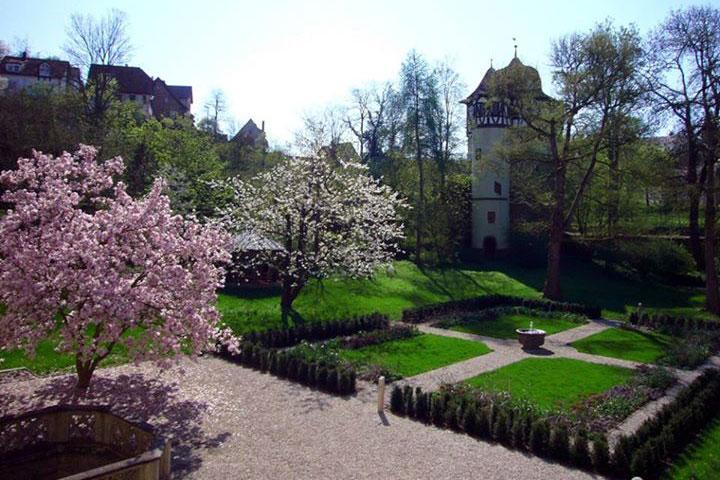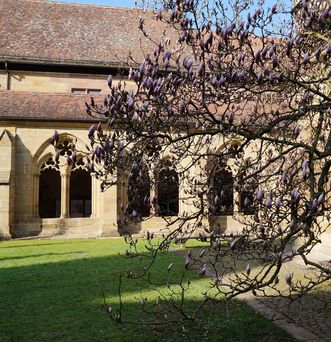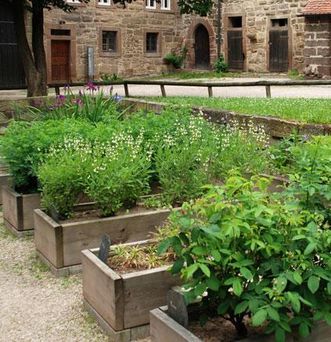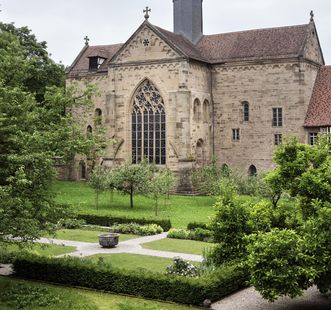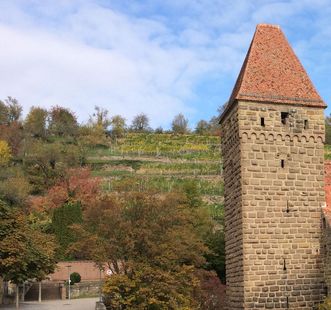A PLACE OF PEACE AND RETREAT
The cloister garden is the center of the cloister, and thus the center of the monastery. It was a place where monks could retreat for prayer and meditation. Its position within the monastery walls and its highly symmetrical design still invites visitors to linger and unwind. The cloister garden was also a place for rare plants however, which were particularly well-cultivated here. A highlight is the beautiful old magnolia tree, which blooms every spring.



